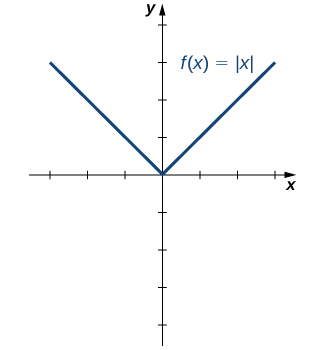| << Chapter < Page | Chapter >> Page > |
In contrast, looking at [link] again, if a function is symmetric about the origin, then whenever the point is on the graph, the point is also on the graph. In other words, If has this property, we say is an odd function, which has symmetry about the origin. For example, is odd because
If for all in the domain of then is an even function . An even function is symmetric about the y -axis.
If for all in the domain of then is an odd function . An odd function is symmetric about the origin.
Determine whether each of the following functions is even, odd, or neither.
To determine whether a function is even or odd, we evaluate and compare it to f ( x ) and
One symmetric function that arises frequently is the absolute value function , written as The absolute value function is defined as
Some students describe this function by stating that it “makes everything positive.” By the definition of the absolute value function, we see that if then and if then However, for Therefore, it is more accurate to say that for all nonzero inputs, the output is positive, but if the output We conclude that the range of the absolute value function is In [link] , we see that the absolute value function is symmetric about the y -axis and is therefore an even function.

Find the domain and range of the function
Since the absolute value function is defined for all real numbers, the domain of this function is Since for all the function Therefore, the range is, at most, the set To see that the range is, in fact, this whole set, we need to show that for there exists a real number such that
A real number satisfies this equation as long as
Since we know and thus the right-hand side of the equation is nonnegative, so it is possible that there is a solution. Furthermore,
Therefore, we see there are two solutions:
The range of this function is
For the function find the domain and range.
Domain = range =

Notification Switch
Would you like to follow the 'Calculus volume 1' conversation and receive update notifications?